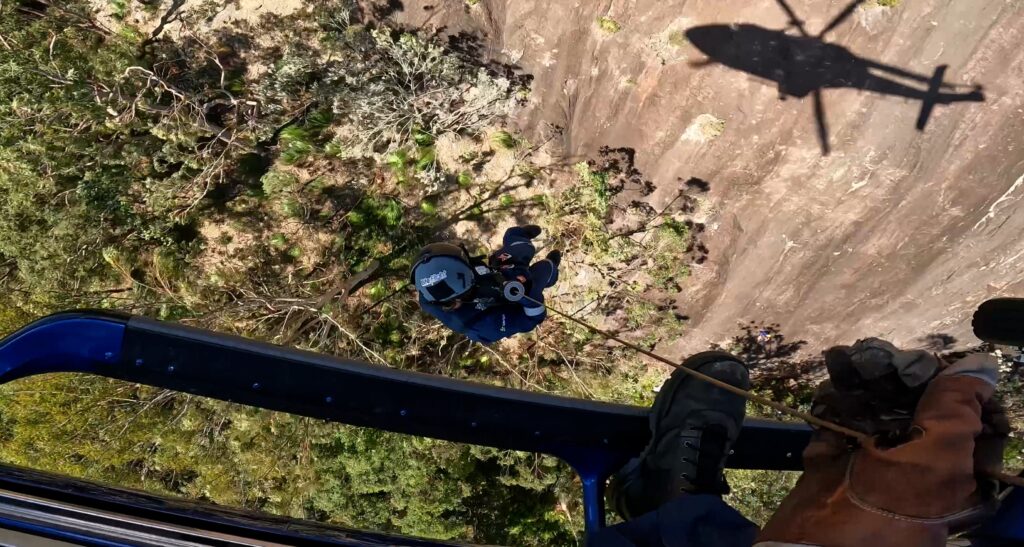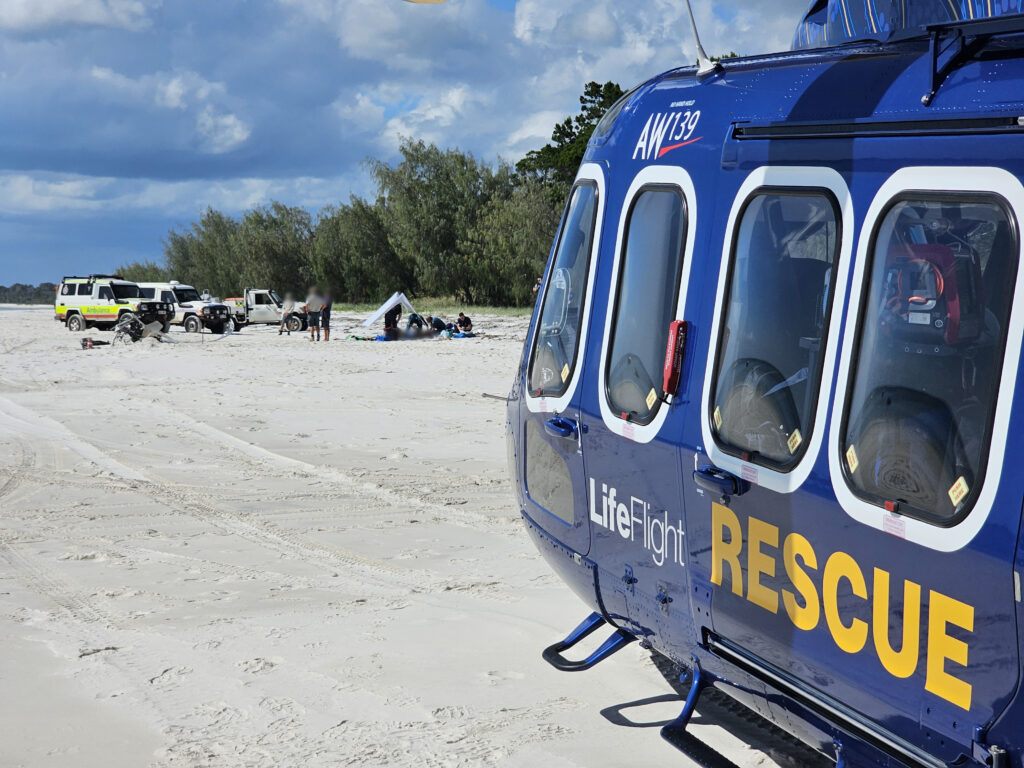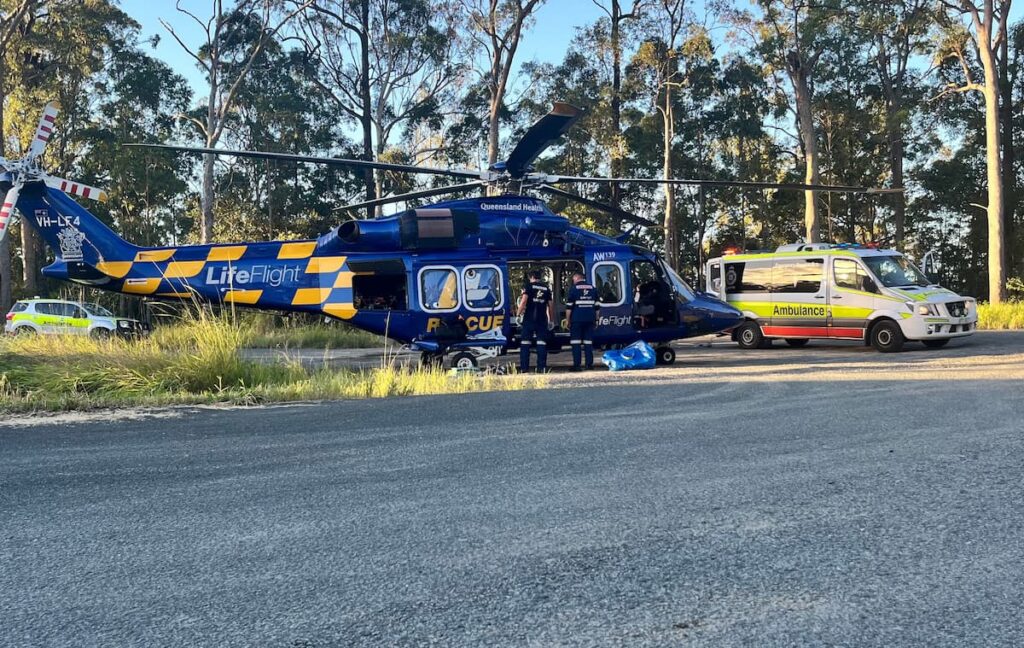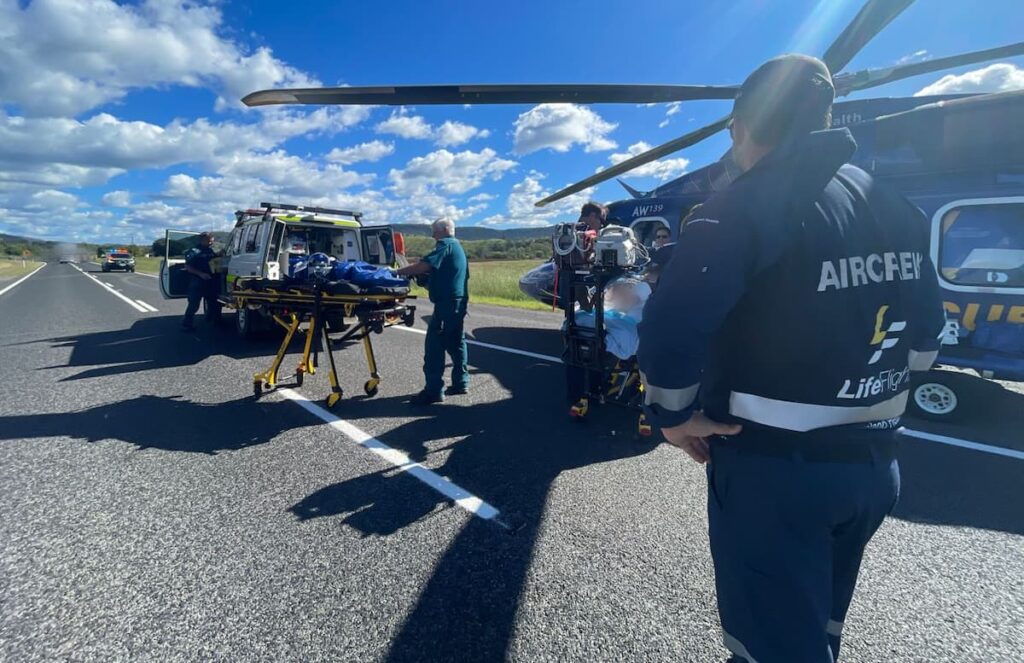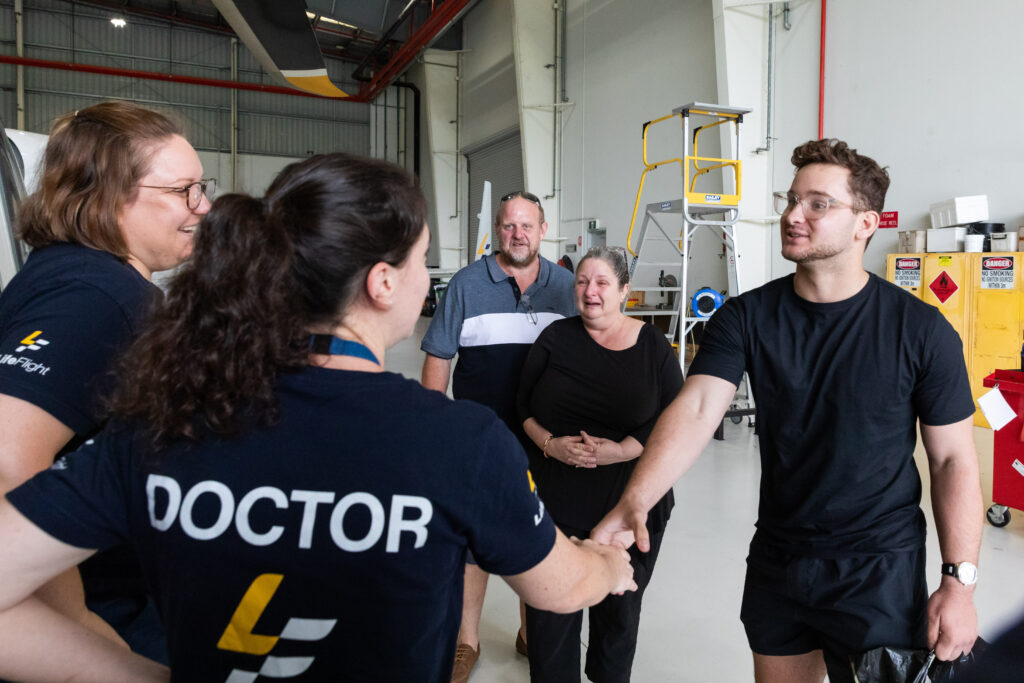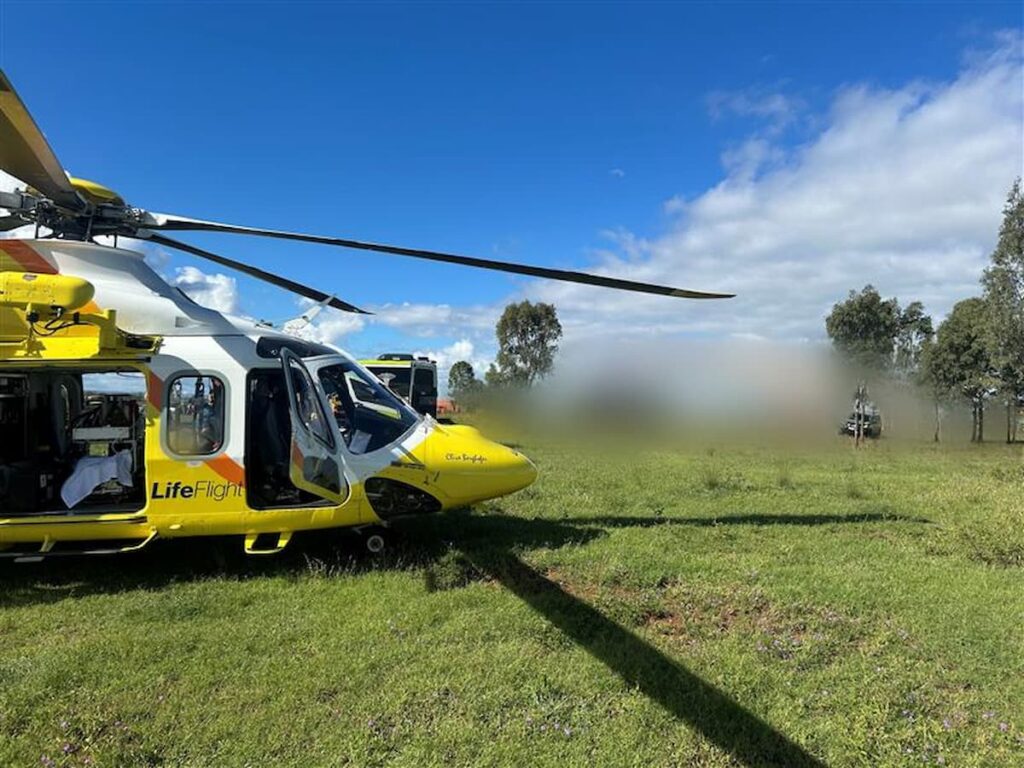Bundaberg’s RACQ LifeFlight Rescue helicopter service has today celebrated a significant milestone, clocking up 25 years of delivering critical aeromedical care and saving lives in the Wide Bay and Burnett region.
The milestone was celebrated with a community stakeholder event held at the Bundaberg LifeFlight base, where supporters had an opportunity to go behind the scenes at the base and hear about the impact of the service in the region.
The sight of RACQ LifeFlight Rescue’s iconic blue and yellow helicopters is familiar to people across Bundaberg and beyond, and the rescue chopper service has a rich and colourful history.
It all began on March 1st, 1998, after the then Sunshine Coast Helicopter Rescue Service recognised a need for the Wide Bay-Burnett to have its own dedicated aeromedical rescue chopper.
A base was established and the rescue chopper, which at the time was a Bell Jetranger, soon became operational as the Energex Rescue helicopter.
After an initial three-year trial justified the need, the Queensland Government committed additional funding to help continue the Bundaberg service and upgrade the aircraft to a Bell Longranger.
Demand in the local region continued to grow, sparking multiple aircraft upgrades over the years, including the introduction of the current Bell 412 aircraft.
“It seems like it was only yesterday the service began, I can’t believe it’s been 25 years,” RACQ LifeFlight Rescue Pilot Peter Marris said.
“Seeing where we have come from in those initial days starting with a Bell Jetranger, with only a pilot and paramedic on board the chopper, to where we’ve come now being based in a multi-million dollar facility that’s been purpose-built, with a multi-engine, instrument rated aircraft, which can fly any time of day or night. We’ve also now got Critical Care Doctors on board the helicopter working with the Queensland Ambulance Service (QAS) Flight Paramedics, so it’s just evolved into a fully mature and essential service.”
There were name changes too; in 2009 it was the AGL Action Rescue helicopter.
In 2013, with the merger of Queensland’s two largest rescue helicopter services – LifeFlight (then known as CareFlight) operating from the Gold Coast and Darling Downs, and the Sunshine Coast Helicopter Rescue Service, there was another name change.
Finally in 2016, the entire fleet, including Bundaberg was renamed RACQ LifeFlight Rescue.
With mission taskings increasing each year, the operation outgrew its original base and in 2020 the helicopter and crew moved into a new, purpose-built facility at Bundaberg Airport.
Through various name, colour and aircraft changes, the Bundaberg rescue chopper has flown to the aid of thousands of people in times of crisis. In the past 10 years alone, the Bundaberg-based RACQ LifeFlight Rescue helicopter crew has performed 2,724 critical missions, resulting in more than 2,300 people helped.
“I’ve been able to help many residents and tourists in the region over my time with the Bundaberg helicopter service,” said RACQ LifeFlight Rescue Pilot Peter Marris.
“Some of the most memorable missions I’ve been involved in have been helping in the catastrophic 2011 and 2013 floods, where residents had to be winched from the roofs of their homes.
“I’ve also flown to help holidaymakers injured in dingo attacks on K’gari (Fraser Island) on multiple occasions, as well as attending countless serious motor vehicle incidents, and even a tilt train derailment near Rosedale,” he said.
Peter has been a pilot with the Bundaberg rescue operation since its inception and knows all too well how important it is to the people of Queensland, in their time of need.
“The aeromedical service means people living in all areas within the Wide Bay and Burnett have access to a high standard of medical care available to them 24/7, 365 days a year.”
QAS Flight Paramedic Kevin Charteris has also been working on the Bundaberg chopper since the service began and said it is a privileged to have been able to help the community across the Wide Bay and Burnett for the past 25 years.
‘”When I started I was about 25 years old, I’m now over 50 and to still be able to help the community is a very good feeling and one that I enjoy every day still,” he said.
Mary Briggs is one of the many people who have found themselves needing the vital care of RACQ LifeFlight Rescue, after she was crushed by a gate, which had been kicked closed by a bull in July 2019.
She suffered multiple injuries and was airlifted to hospital by the Bundaberg-based RACQ LifeFlight Rescue team.
“Once I arrived at Bundaberg Hospital, the surgeons told my family that I only had a 5% chance of survival, so without the LifeFlight crew’s knowledge and capability, I definitely wouldn’t be here today,” she said.
Mary visited the Bundaberg base today and was able to give thanks to the crew who helped save her life.
“I feel blessed to have had the crew come to aid that day. They were absolutely amazing, and you feel safe in their hands,” she said.
Wide Bay-Burnett Regional Advisory Committee Chair, Neil McPhillips said despite so many changes over the past 25 years, the commitment to the community and saving lives has never faltered.
“What we have in the Wide Bay and Burnett is an amazing service, that is quite literally saving hundreds of lives each year,” he said, “but we wouldn’t be where we are today without the incredible support and generosity of the community, to help us continue and grow.”
Just last month the Bundaberg-based RACQ LifeFlight Rescue Critical Care Doctor rotation was bolstered from three day shifts a week, to seven, to enhance the outstanding aeromedical care already provided in the region.
The highly qualified doctors are working alongside experienced aviators and Queensland Ambulance Service (QAS) Flight Paramedics, some of whom have been with the service for decades.
It remains LifeFlight’s ambition to expand the doctor roster to 24/7 in the future.





